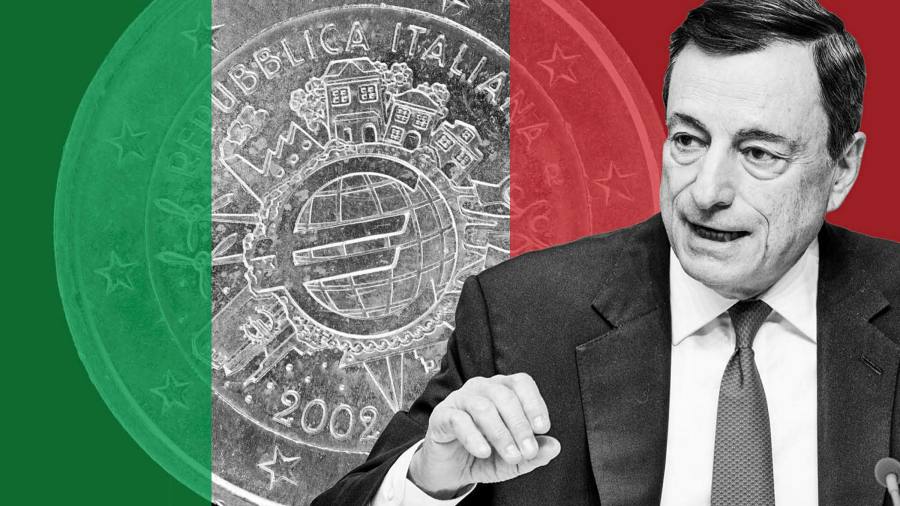[ad_1]
Investors flocked to Italy’s inaugural environment-focused government bond offering on Wednesday, allowing the country to raise more than €8bn.
The banks running the issuance chalked up around €80bn in orders for €8.5bn of debt. It was the biggest debut sovereign green bond from a European issuer to date, according to Intesa Sanpaolo, which worked on the deal.
Other recent Italian bond sales have also attracted strong demand, after former European Central Bank president Mario Draghi became prime minister last month.
Demand for the debt highlights the popularity of green bonds, which provide funding for environmental projects and require borrowers to report to investors on how the funds are used.Â
Tanguy Claquin, head of sustainable banking at Crédit Agricole, which was a co-manager on the transaction, said the sale was met with “very strong support†from investors, particularly those that are required to consider environmental factors in their portfolios.
The bond, which matures in 2045, was issued with a yield of 1.547 per cent. The underwriters were able to reduce the premium against a normal Italian government bond maturing in 2041 to 0.12 percentage points, a slimmer premium than the 0.15 points initially mooted.
Italy follows several European countries, including Poland, Ireland, Sweden and the Netherlands, into the green debt market. France has issued 11 green bonds since 2017, totalling $30.6bn according to Moody’s Investors Service. Germany joined the market last year with two green Bunds. In its budget on Wednesday, the UK announced plans to sell at least £15bn of green bonds in two offerings this year.Â
Italy is the first riskier southern-European government to tap the green market. The spreads on Italian debt relative to the eurozone benchmark German bonds fell to a six-year low of less than 0.9 percentage points in early February in a sign of investors confidence in Draghi’s leadership of the EU’s third-largest economy. The spread widened during last week’s volatile bond market trading but remains low by recent standards.
Spain plans to follow Italy with a green bond offering in the second half of 2021. Analysts expect an initial €5-10bn sale at a 20-year maturity. Johann Plé, senior portfolio manager at AXA Investment Managers said the demand for Italy’s sale “should reinforce the willingness of Spain and others to follow suit.â€
Plé said the price investors paid for the Italian green bond “remained fair†and that this “highlights that strong demand does not necessarily mean investors have to pay a larger premium”.
Green bonds often command higher prices, and therefore lower yields, than their conventional equivalents from the same issuer. The German green Bund currently trades with a “greenium†around 0.04 to 0.05 percentage points, roughly double the gap when it was initially issued, according to UniCredit analysis, while French government green debt is roughly 0.01 percentage points lower in yield than conventional bonds.
Italy’s pitch on the environmental impact and reporting of its green projects drew positive reactions from some investors. Saida Eggerstedt, head of sustainable credit at Schroders, which invested in the bond, said the details provided on projects including low-carbon transport, power generation, and biodiversity were “really impressiveâ€.
[ad_2]
Source link





